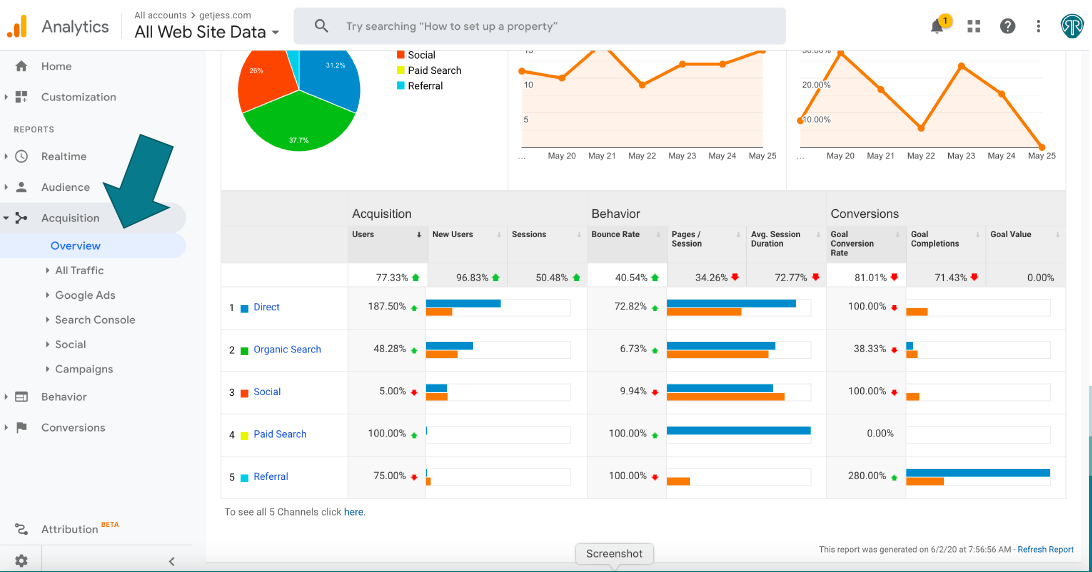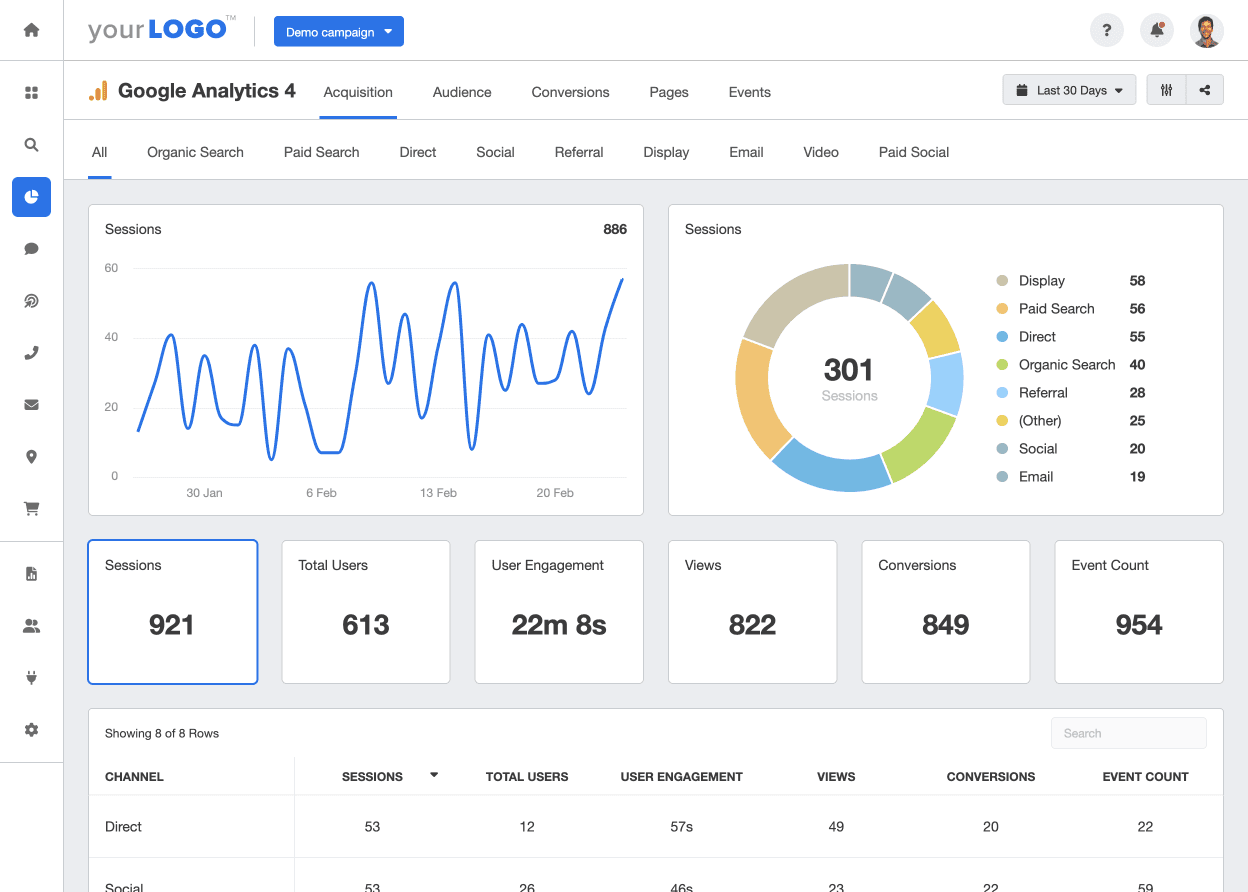Professional Tips on When Does the Google Analytics Tracking Code Send an Event Hit to Analytics for Improved Data Accuracy
Master Website Insights With Accurate Google Analytics Monitoring Code
The reliable utilization of Google Analytics rests on the precise application of its tracking code, an essential step often ignored by internet site proprietors. This apparently straightforward JavaScript snippet, when properly placed, becomes the foundation of data collection, supplying insights right into user behavior and site performance. Nonetheless, obstacles can develop during arrangement, potentially skewing the information and bring about mistaken decisions. Understanding these ins and outs is essential for taking full advantage of the advantages of analytics. What are the typical risks that could threaten your tracking efforts, and just how can you make sure precision in your method?
Recognizing Google Analytics Fundamentals
Google Analytics is an essential device for site proprietors and online marketers, providing very useful insights right into user habits and internet site efficiency. At its core, Google Analytics accumulates data concerning visitors to a site, permitting users to examine metrics such as traffic sources, individual involvement, and conversion prices. Recognizing these basics is vital for optimizing a site's effectiveness and enhancing customer experience.
The platform utilizes cookies to track interactions, videotaping data such as web page sights, session periods, and bounce prices. This info is accumulated and presented through adjustable dashboards, making it possible for users to visualize patterns with time. Key performance signs (KPIs) can be checked, such as the total number of users, new versus returning site visitors, and the geographical circulation of the target market.
In Addition, Google Analytics provides segmentation features, allowing individuals to separate certain website traffic resources or individual demographics for even more targeted evaluation. By understanding these fundamental aspects, internet site proprietors can make educated choices concerning web content approach, marketing projects, and general site enhancements. Eventually, recognizing Google Analytics essentials is essential for leveraging data to drive development and achieve business purposes successfully.
Setting Up Your Monitoring Code

Duplicate the supplied tracking code and paste it into the HTML of your internet site. This makes certain that the tracking code loads prior to any type of other web content, enabling it to capture information precisely.
After installment, confirm that the tracking code is operating properly by making use of Google Tag Aide or the Real-Time reports in Google Analytics - when does the google analytics tracking code send an event hit to analytics?. This step is vital to verify that your data collection is exact and active, setting the structure for insightful analysis
Common Monitoring Code Issues
This may occur when the monitoring code is put in the incorrect section of the web site's HTML, typically leading to missing or insufficient data. Furthermore, having several instances of the monitoring code on a single page can result in inflated metrics, as user communications could be counted much more than when.
An go to this site additional problem develops from the usage of ad blockers, which can protect against the tracking code from carrying out completely, hence skewing information. when does the google analytics tracking code send an event hit to analytics?. Moreover, failure to configure filters properly can lead to the exemption of important traffic resources or the addition of unwanted reference spam, distorting the data accumulated
Web site proprietors might also ignore the relevance of tracking code updates, especially when migrating to Google Analytics 4 (GA4) from Universal Analytics. Lastly, not enough screening prior to introducing modifications can lead to undiscovered errors in the tracking code, better making complex information dependability. Dealing with these common issues is essential for guaranteeing accurate monitoring and informative analytics.
Analyzing Website Information Efficiently
Accurate information collection is just the very first step in leveraging Google Analytics; the actual worth lies in effectively analyzing that information to drive educated decision-making. To achieve this, it is necessary to determine key performance signs (KPIs) that align with your business objectives. Concentrate on metrics such as conversion prices, user involvement, and web traffic sources, as these will certainly provide insights into customer actions and the general effectiveness of your internet site.
Using Google redirected here Analytics' division functions permits a deeper understanding of your target market. By breaking down data right into particular demographics, why not try these out actions, and traffic channels, you can reveal trends and patterns that educate targeted techniques. Applying customized records and dashboards can enhance this process, allowing fast access to significant data.
In addition, frequently reviewing data patterns with time helps to determine abnormalities and opportunities for enhancement. Make use of visualization devices to present data in a quickly absorbable format, helping with extra effective communication with stakeholders. Eventually, the capability to assess website data successfully equips companies to make critical choices that boost user experience, optimize advertising initiatives, and drive development.

Ideal Practices for Accurate Monitoring
Executing reliable tracking methods is vital for getting reputable data in Google Analytics. To guarantee precise monitoring, start by correctly setting up the Google Analytics tracking code on every page of your web site. This can be accomplished with a tag manager or by straight installing the code into the HTML.
Next, configure your Google Analytics account to leave out internal web traffic. This can be done by establishing up filters that identify and get rid of brows through from your organization's IP address, thus protecting against manipulated data. Furthermore, use occasion monitoring to monitor certain individual communications, such as downloads or video plays, which conventional web page sights might forget.
Frequently examine your monitoring setup to confirm that all features, such as goals and ecommerce tracking, are working appropriately. Develop a constant identifying convention for your projects and occasions to facilitate easier reporting and analysis.
Lastly, consider leveraging UTM parameters for campaigns to gain insights right into the efficiency of various advertising and marketing initiatives. By adhering to these ideal methods, you can boost the accuracy of your information collection and evaluation, inevitably bring about even more educated decision-making for your web site.
Final Thought
Exact implementation of the Google Analytics tracking code is essential for mastering website understandings. By making certain the monitoring code is correctly placed and regularly examined, web site owners can capture essential customer interaction data, hence promoting the identification of key efficiency signs. Effective evaluation of this data, combined with adherence to ideal methods, enables educated decision-making and the optimization of on the internet strategies. Inevitably, a robust monitoring structure enhances the capability to drive engagement and boost general website efficiency.

Insufficient testing prior to introducing modifications can result in unnoticed errors in the tracking code, better making complex data reliability.Implementing reliable tracking practices is critical for acquiring trusted information in Google Analytics. By guaranteeing the monitoring code is properly placed and regularly examined, web site owners can record important user communication data, hence helping with the recognition of crucial performance signs.